

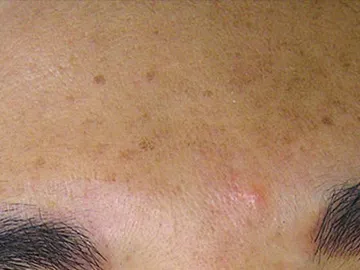
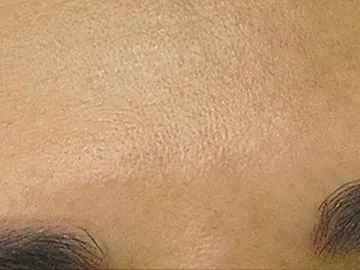

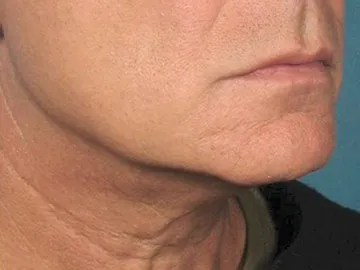
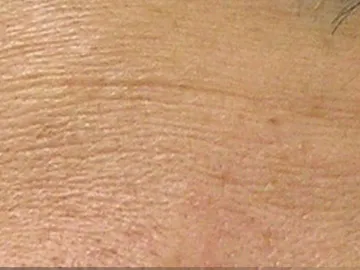
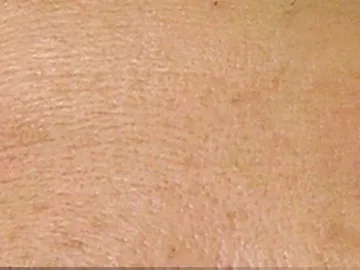
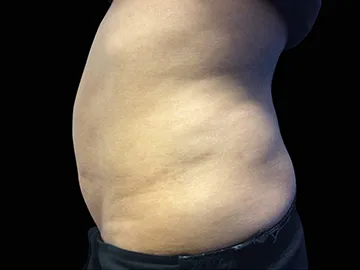

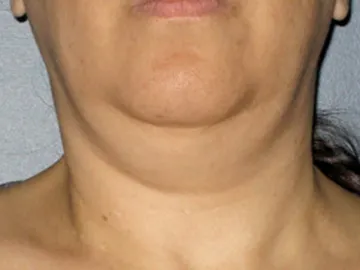

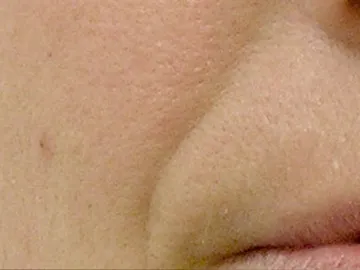
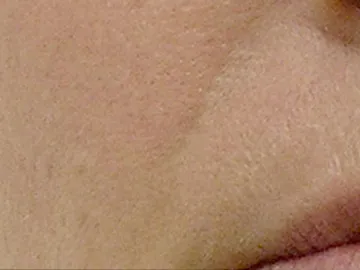



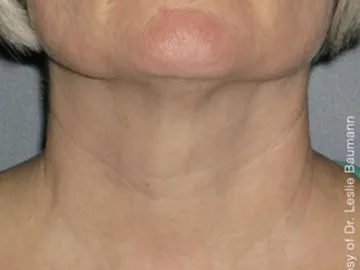
What an amazing experience! From the moment I walked into the office and was greeted by the warm and lovely woman at the front desk, and the very kind and welcoming Director Teri, I knew I was going to be very happy. My treatment was wonderful. Nurse practitioner Saneeha sat with me before the treatment and thoroughly explained the process and answered all of my questions. I was instantly comfortable and confident I was in the right place. She was absolutely incredible from beginning to end. I couldn’t have asked for a better experience. Will most definitely be back!!
Truly the nicest office staff I have ever met. They are extremely helpful, kind, and warm. Plus, the results were amazing. The staff is very knowledgeable, thorough, and overall great at what they do! I have no complaints. I will definitely come to them for any future aesthetic needs!
I had the most amazing experience here! The hydrafacial was excellent. The staff was very friendly, warm and took the time out to answer all my questions. I highly recommend Heritage Veins & Aesthetics! Will definitely be back.
Came here for RF Micro needling the other day and it was one of the best experiences I've had. I've never been so happy with my skin before, I would 10/10 recommend this place to all my friends and more. They offer a variety of other treatments as well, I highly suggest you check them out!
A+ facilities, welcoming and knowledgeable staff! Wide breadth of services offered at this newly renovated clinic (was recommended by a friend). Highly recommend the hydra facial!
wanted to thank Dr Nirman and Team at Heritage Veins and Aesthetics! had a procedure done earlier today using Radiesse which is a calcium based agent that was injected in both sides of my jaw. results have been great in such a short time where my jaw looks much more defined and chiseled and cannot wait to see the post results in a few days!
Self care for women is a need . Dr Norman validated that by not only helping to look good but also feel good. This is an awesome spot for hydro facials & emsculpt . Feels like home with super expertise . Keep it up Tina & Norman
I came here for a hydrafacial and emsculpt. The place was incredibly clean and they were taking extra precautions for Covid. The staff was professional and welcoming. The facial was relaxing and my skin was glowing immediately. The emscuplt felt like a work out and I could see and feel results the very next day. Would highly recommend and can’t wait to bring my girlfriends here!
Tried this place out as it was recommended by a friend and so glad I did. The Hydrafacial was exactly what my face needed after 6 months of quarantine and mask-wearing. My service was done by a Nurse Practitioner named Saneeha which made the whole experience feel so much more legitimate then just some random day spa. She was super knowledgeable, patient and informative. She even showed me the gunk that came off my face in the vile (i know, TMI). I immediately bought a package to go back monthly for these hydrafacials. The EM Sculpt was a surprisingly a pleasant experience and definitely felt it the next day. Definitely recommend this spot for hands-on and professional care. This is not a bunch of random contractors working on your face and body and they are priced well for that huge advantage!!
I have been lucky enough to have experienced tons of spas including medical spas in the past. Someone I know suggested Heritage because I was looking for a hydrafacial after a long summer spending a lot of time outside. The prices were intriguing especially compared to NYC so I gave it a try. I was obviously a little hesitant about going to a new place during Covid times and I have a ridiculously high standard of cleanliness. This place was immaculate. I actually looked for a misstep in cleaning and couldn't find one. They have HEPA filtering/air cleaning system throughout and the staff were all wearing masks and when treating they were also wearing shields. It's not only clinically clean it was also warm, inviting and the treatment room had that spa feel I like. Saneeha Toor is extremely knowledgeable and I would trust her with any treatments she offers...and there are many, including a brand new EmSculpting machine that intrigued me. The hydrafacial was awesome though and I would highly recommend it to anyone. She will spend time with you before and after and offer any of her own services as well as DIY treatments to keep up with the healthy skin routine. I don't ever write reviews, and I have to say, I was compelled to do so after my visit there because it was so professional, clean, affordable and exceeded my high expectations.
Dr. Tulsyan and his entire staff were welcoming and professional. The office is like a spa. Dr. Tulsyan is very caring and explained everything to me. My legs have never looked or felt better! I highly recommend Dr. Tulsyan to anyone needing vein treatments.
Dr. Tulsyan is an awesome doctor who is extremely knowledgeable about leg veins. I have been going for months to treat my problematic leg veins. The results are phenomenal. I appreciate how caring, thorough and professional everyone at the office is. From the moment you walk in they really make you feel comfortable. The office is super clean and follows all guidelines for COVID19. I will continue going back for the excellent service!
Heritage Vein and Aesthetics is a wonderful experience. I went in for the HydraFacial and Emsculpt. My skin is glowing after the facial and I am already seeing a difference in my abs after 2 sessions. Nicole and Nikita are very professional and friendly. The office is extremely clean and relaxing. I will definitely be back!!
I love this place! Nicole is the best, my skin has shown dramatic change with the hydro facials! They have great products you can purchase for the best results. 10/10 recommend!
Friendly place! Really love it here & have always been satisfied with my services. Nicole is great at what she does & so is the doctor, forgot his name but he did my PRP sessions! Great results with PRP, facials, & hair laser removal Thank you
Thank You Nicole, you are amazing! 🤗 Every time I go to you, I leave the office satisfied. From facials to laser hair removal…love the results!! The whole staff is incredibly professional, makes you feel special. Great Experience.
Nice office. Professional staff. Dr. Tulsyan is an excellent doctor. Highly recommend.
I no longer suffer from leg pain or restless leg syndrome. Thank you Dr. Tulsyan!
Great experience at Heritage! Nicole who did my treatments and Nikita at the front desk are wonderful - super organized, professional and friendly. The treatment room was very clean. Nicole listened to my concerns and provided great service. Highly recommend!!
What an amazing experience! From the moment I walked into the office and was greeted by the warm and lovely woman at the front desk, and the very kind and welcoming Director Teri, I knew I was going to be very happy. My treatment was wonderful. Nurse practitioner Saneeha sat with me before the treatment and thoroughly explained the process and answered all of my questions. I was instantly comfortable and confident I was in the right place. She was absolutely incredible from beginning to end. I couldn’t have asked for a better experience. Will most definitely be back!!
Truly the nicest office staff I have ever met. They are extremely helpful, kind, and warm. Plus, the results were amazing. The staff is very knowledgeable, thorough, and overall great at what they do! I have no complaints. I will definitely come to them for any future aesthetic needs!
I had the most amazing experience here! The hydrafacial was excellent. The staff was very friendly, warm and took the time out to answer all my questions. I highly recommend Heritage Veins & Aesthetics! Will definitely be back.
Came here for RF Micro needling the other day and it was one of the best experiences I've had. I've never been so happy with my skin before, I would 10/10 recommend this place to all my friends and more. They offer a variety of other treatments as well, I highly suggest you check them out!
A+ facilities, welcoming and knowledgeable staff! Wide breadth of services offered at this newly renovated clinic (was recommended by a friend). Highly recommend the hydra facial!
wanted to thank Dr Nirman and Team at Heritage Veins and Aesthetics! had a procedure done earlier today using Radiesse which is a calcium based agent that was injected in both sides of my jaw. results have been great in such a short time where my jaw looks much more defined and chiseled and cannot wait to see the post results in a few days!
Self care for women is a need . Dr Norman validated that by not only helping to look good but also feel good. This is an awesome spot for hydro facials & emsculpt . Feels like home with super expertise . Keep it up Tina & Norman
I came here for a hydrafacial and emsculpt. The place was incredibly clean and they were taking extra precautions for Covid. The staff was professional and welcoming. The facial was relaxing and my skin was glowing immediately. The emscuplt felt like a work out and I could see and feel results the very next day. Would highly recommend and can’t wait to bring my girlfriends here!
Tried this place out as it was recommended by a friend and so glad I did. The Hydrafacial was exactly what my face needed after 6 months of quarantine and mask-wearing. My service was done by a Nurse Practitioner named Saneeha which made the whole experience feel so much more legitimate then just some random day spa. She was super knowledgeable, patient and informative. She even showed me the gunk that came off my face in the vile (i know, TMI). I immediately bought a package to go back monthly for these hydrafacials. The EM Sculpt was a surprisingly a pleasant experience and definitely felt it the next day. Definitely recommend this spot for hands-on and professional care. This is not a bunch of random contractors working on your face and body and they are priced well for that huge advantage!!
I have been lucky enough to have experienced tons of spas including medical spas in the past. Someone I know suggested Heritage because I was looking for a hydrafacial after a long summer spending a lot of time outside. The prices were intriguing especially compared to NYC so I gave it a try. I was obviously a little hesitant about going to a new place during Covid times and I have a ridiculously high standard of cleanliness. This place was immaculate. I actually looked for a misstep in cleaning and couldn't find one. They have HEPA filtering/air cleaning system throughout and the staff were all wearing masks and when treating they were also wearing shields. It's not only clinically clean it was also warm, inviting and the treatment room had that spa feel I like. Saneeha Toor is extremely knowledgeable and I would trust her with any treatments she offers...and there are many, including a brand new EmSculpting machine that intrigued me. The hydrafacial was awesome though and I would highly recommend it to anyone. She will spend time with you before and after and offer any of her own services as well as DIY treatments to keep up with the healthy skin routine. I don't ever write reviews, and I have to say, I was compelled to do so after my visit there because it was so professional, clean, affordable and exceeded my high expectations.
Dr. Tulsyan and his entire staff were welcoming and professional. The office is like a spa. Dr. Tulsyan is very caring and explained everything to me. My legs have never looked or felt better! I highly recommend Dr. Tulsyan to anyone needing vein treatments.
Dr. Tulsyan is an awesome doctor who is extremely knowledgeable about leg veins. I have been going for months to treat my problematic leg veins. The results are phenomenal. I appreciate how caring, thorough and professional everyone at the office is. From the moment you walk in they really make you feel comfortable. The office is super clean and follows all guidelines for COVID19. I will continue going back for the excellent service!
Heritage Vein and Aesthetics is a wonderful experience. I went in for the HydraFacial and Emsculpt. My skin is glowing after the facial and I am already seeing a difference in my abs after 2 sessions. Nicole and Nikita are very professional and friendly. The office is extremely clean and relaxing. I will definitely be back!!
I love this place! Nicole is the best, my skin has shown dramatic change with the hydro facials! They have great products you can purchase for the best results. 10/10 recommend!
Friendly place! Really love it here & have always been satisfied with my services. Nicole is great at what she does & so is the doctor, forgot his name but he did my PRP sessions! Great results with PRP, facials, & hair laser removal Thank you
Thank You Nicole, you are amazing! 🤗 Every time I go to you, I leave the office satisfied. From facials to laser hair removal…love the results!! The whole staff is incredibly professional, makes you feel special. Great Experience.
Nice office. Professional staff. Dr. Tulsyan is an excellent doctor. Highly recommend.
I no longer suffer from leg pain or restless leg syndrome. Thank you Dr. Tulsyan!
Great experience at Heritage! Nicole who did my treatments and Nikita at the front desk are wonderful - super organized, professional and friendly. The treatment room was very clean. Nicole listened to my concerns and provided great service. Highly recommend!!
What an amazing experience! From the moment I walked into the office and was greeted by the warm and lovely woman at the front desk, and the very kind and welcoming Director Teri, I knew I was going to be very happy. My treatment was wonderful. Nurse practitioner Saneeha sat with me before the treatment and thoroughly explained the process and answered all of my questions. I was instantly comfortable and confident I was in the right place. She was absolutely incredible from beginning to end. I couldn’t have asked for a better experience. Will most definitely be back!!